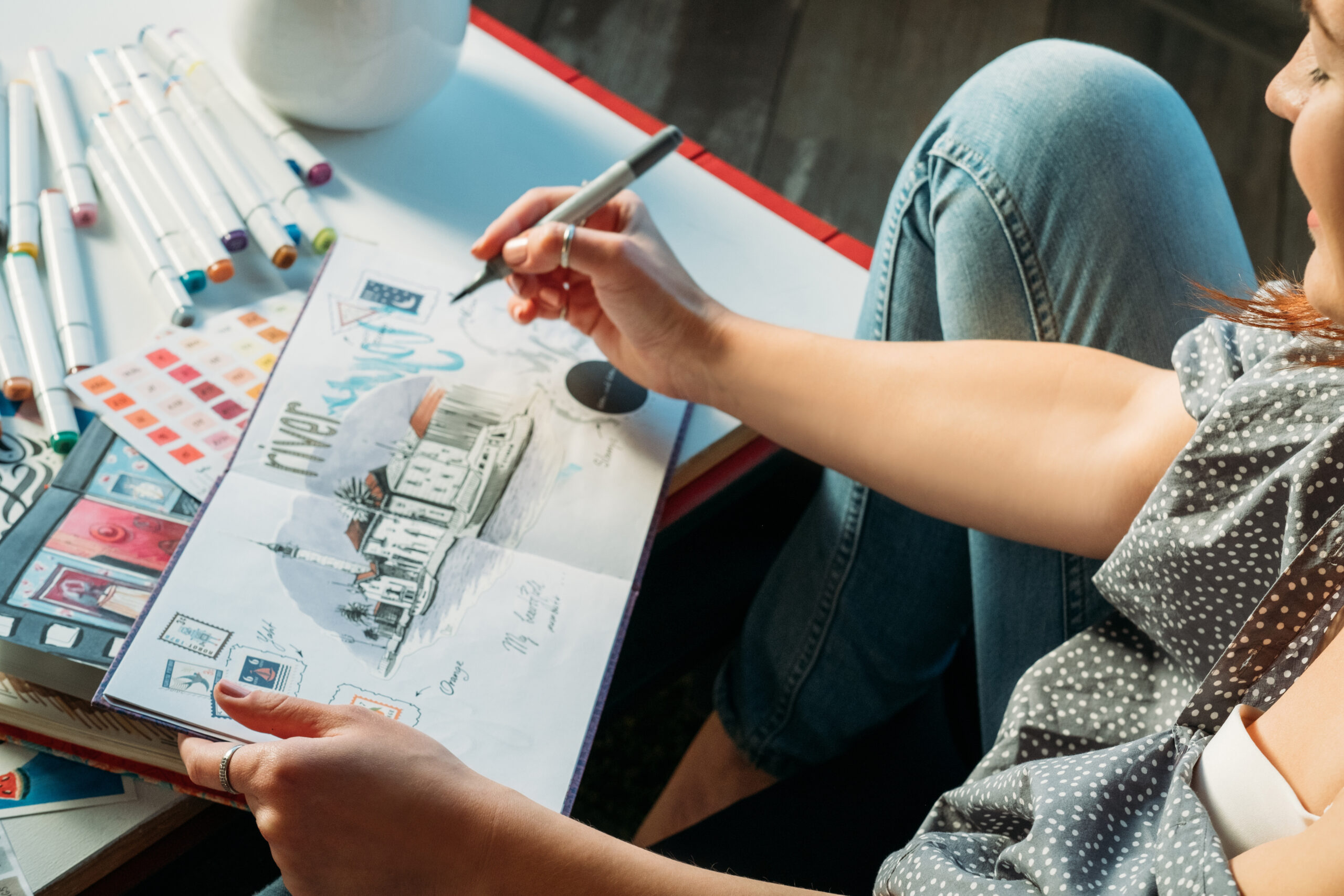Somewhere in a dusty bin in my parents’ attic is a stack of sketchbooks, each page covered in my childhood drawings—imaginary cities, elaborate logos for make-believe companies, and magazine layouts hand-drawn in pencil and marker. At the time, I didn’t realize I was laying the foundation for a career in graphic design. But now, looking back, it’s clear: those quiet hours spent drawing and dreaming gave shape to the designer I would become.
My career today is filled with tight deadlines, client meetings, accessibility standards, and digital tools that would have seemed like magic to 10-year-old me. But beneath it all, the same passion still drives me: the urge to communicate ideas beautifully, clearly, and meaningfully. In this blog, I want to reflect on the journey from those early sketchbooks to the strategic design work I do today—and how my childhood continues to inform my design philosophy.
The Gift of Observation
As a kid, I was obsessed with the little things. I’d stare at cereal boxes, menus, store signs—anything with type and color. I’d notice how certain packaging made something feel more exciting, how a good logo could stick in your brain. I didn’t have the words for it then, but I was already dissecting visual communication.
That habit of observation stayed with me. Even now, one of my greatest tools as a designer is my ability to look closely—not just at the aesthetics, but at how people interact with a design. Does it guide them? Does it make them feel something? Does it serve a purpose? My childhood taught me that the smallest details matter, and in design, they often matter the most.
Drawing Without Fear
One of the gifts of childhood is the freedom to create without self-censorship. My early drawings were wild, experimental, and often very weird—in the best way. I wasn’t worried about perfection. I wasn’t trying to match anyone else’s style. I drew what I felt and saw, and I let the process guide me.
This fearless creativity is something I strive to protect, even in a professional context. Design work often involves structure, revisions, and client expectations. But when I start a project, I always try to give myself space to explore freely—just like I did as a kid. The best ideas usually emerge from that uninhibited stage.
Learning Through Play
I didn’t know it, but my homemade magazine layouts and comic strips were early lessons in design systems. I was teaching myself how to balance text with imagery, how to create rhythm through repetition, how to establish hierarchy with size and space. It was all play—but it was also education.
Today, I often advocate for a “learning through doing” approach when mentoring junior designers. There’s no substitute for getting your hands dirty, for experimenting, failing, and refining. I credit that early, playful experimentation with shaping my intuitive understanding of design long before I knew what kerning or grid systems were.
The Emotional Side of Design
As a child, art was also how I processed the world. I drew when I was sad, when I was excited, when I had something to say but didn’t have the words. That emotional connection to creativity has stayed with me. Design, at its best, is emotional. It tells stories. It resonates.
That’s why I put so much emphasis on empathy in my design work now. Whether I’m building a campaign for a nonprofit or creating branding for a local business, I’m always asking: how does this feel to the audience? What emotion do we want to evoke? That emotional sensitivity, nurtured in childhood, remains central to my design philosophy.
From Personal Passion to Purposeful Practice
Of course, childhood passion alone doesn’t make a career. Over time, I studied design formally, learned software, worked with mentors, and sharpened my strategic thinking. But even as I gained technical skills, I realized that my unique voice as a designer came from honoring where I started.
When I design today, I bring that full journey with me. I bring the kid who obsessed over fonts at the local bookstore. I bring the teen who redesigned every school project to look like a magazine. And I bring the adult who now understands how to merge creativity with communication goals, audience needs, and accessibility standards.
Designing with Heart and Clarity
One of the most consistent through-lines from my early days to now is my belief that design should both serve and inspire. It should communicate clearly, yes—but it should also connect. That’s why, no matter how strategic or structured a project might be, I always look for opportunities to bring humanity into the design.
Sometimes that means advocating for more inclusive imagery. Other times it’s about adding moments of visual delight—tiny animations, hand-drawn icons, or subtle textures that make a design feel warm and real. These little touches echo the handmade charm of my childhood creations. They remind me that design isn’t just about what we see—it’s about how we experience it.
Full Circle
It’s funny to think that my career as a designer really started with a box of markers and a sketchpad. What began as a quiet childhood hobby grew into a professional practice grounded in empathy, clarity, and purpose. And the more I grow in this field, the more I find myself returning to those early lessons.
So here’s my advice to other creatives: don’t forget where you started. Your childhood curiosity, your messy sketches, your early obsessions—they’re not separate from your professional identity. They’re the roots of it. And when we honor those roots, our work becomes not just technically sound, but personally meaningful.
That’s what design is all about.
